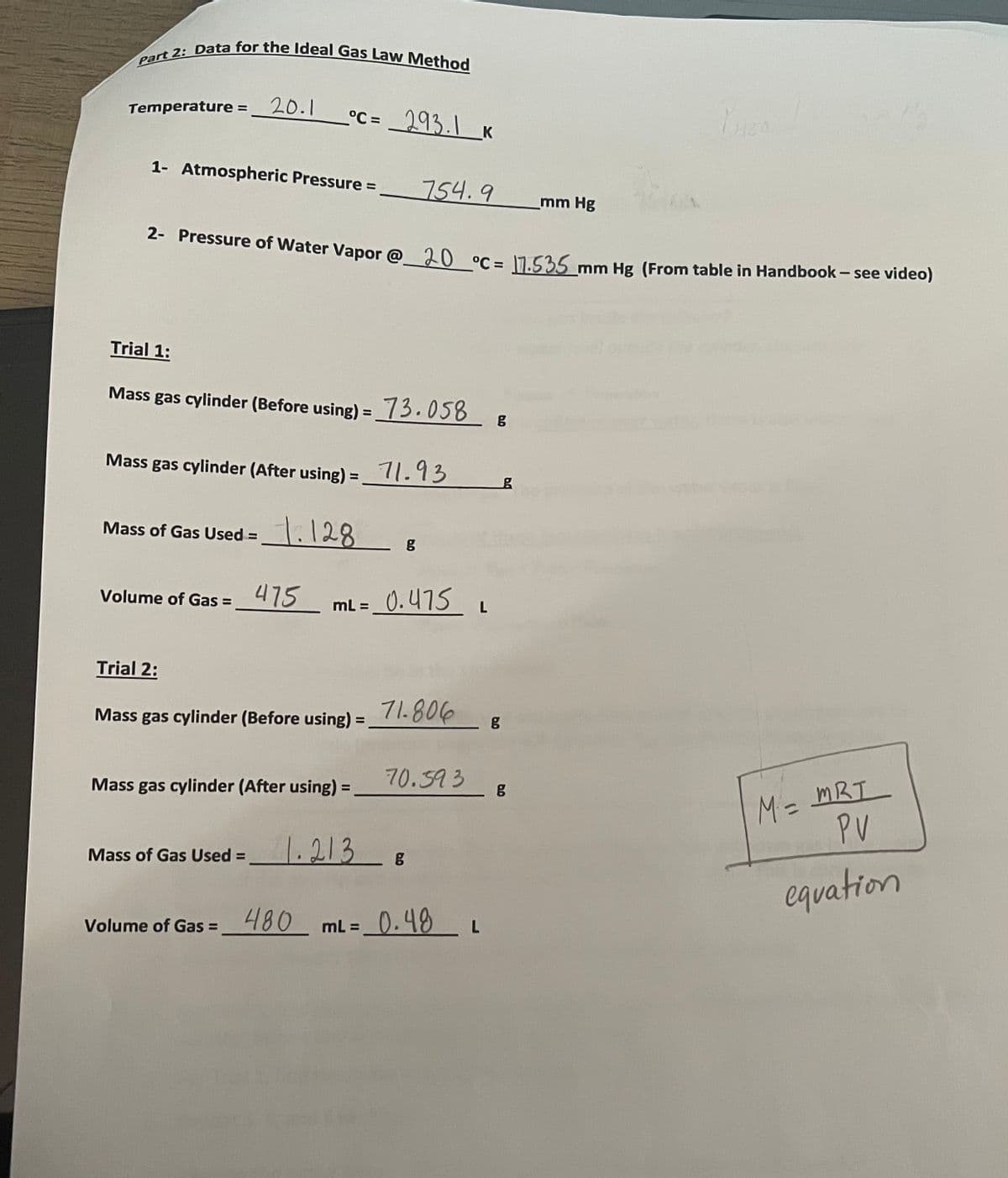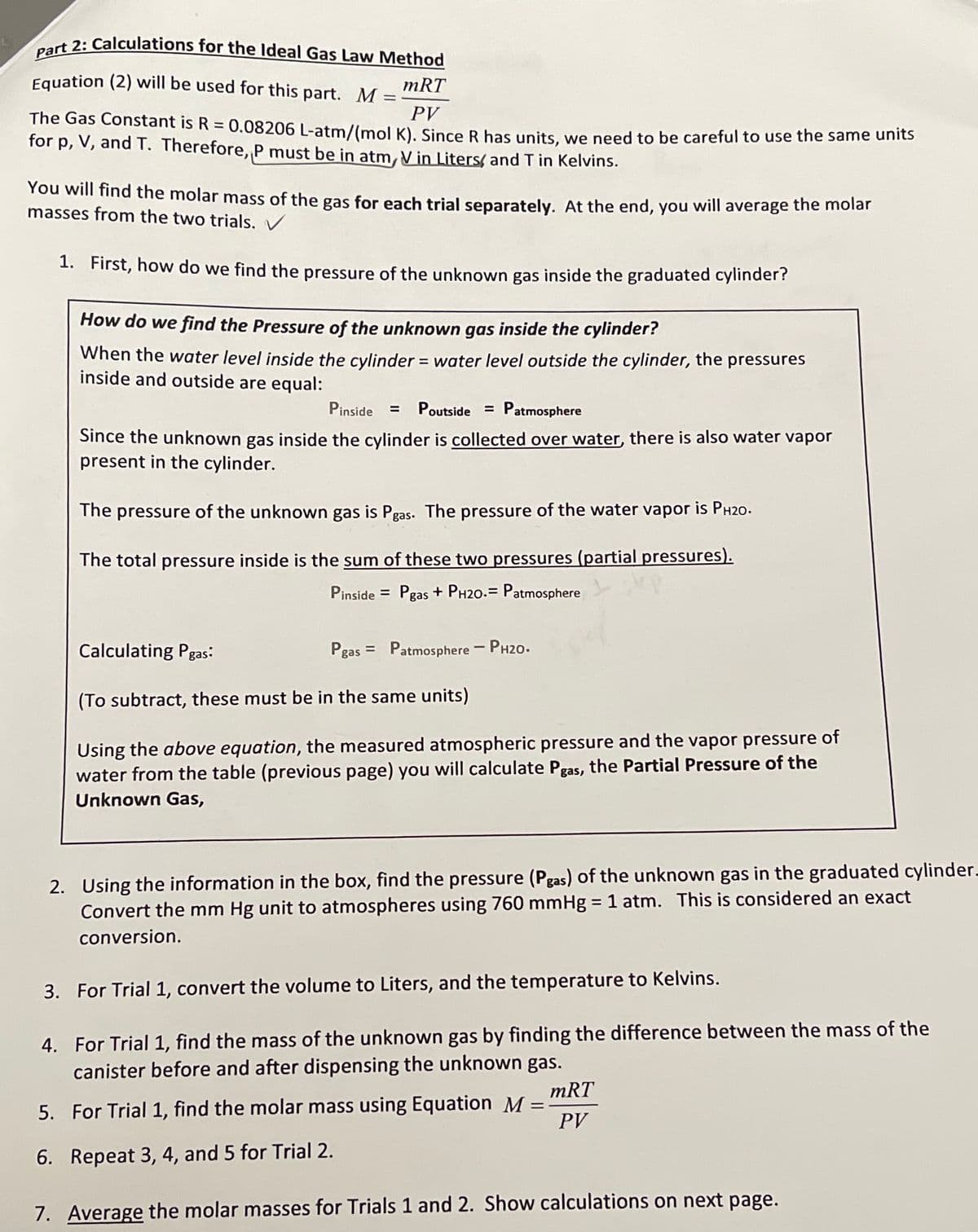1. First, how do we find the pressure of the unknown gas inside the graduated cylinder? How do we find the Pressure of the unknown gas inside the cylinder? When the water level inside the cylinder water level outside the cylinder, the pressures inside and outside are equal: Pinside Poutside = Patmosphere %3D Since the unknown gas inside the cylinder is collected over water, there is also water vapor present in the cylinder. The pressure of the unknown gas is Pgas. The pressure of the water vapor is PH20. The total pressure inside is the sum of these two pressures (partial pressures). Pinside = Pgas + PH20.= Patmosphere Calculating Pgas: Pgas = Patmosphere - PH2O. (To subtract, these must be in the same units) Using the above equation, the measured atmospheric pressure and the vapor pressure of water from the table (previous page) you will calculate Pgas, the Partial Pressure of the Unknown Gas, 2. Using the information in the box, find the pressure (Pgas) of the unknown gas in the graduated cylinder. Convert the mm Hg unit to atmospheres using 760 mmHg 1 atm. This is considered an exact conversion. 3. For Trial 1, convert the volume to Liters, and the temperature to Kelvins. 4. For Trial 1, find the mass of the unknown gas by finding the difference between the mass of the canister before and after dispensing the unknown gas. mRT Eguation M
Ideal and Real Gases
Ideal gases obey conditions of the general gas laws under all states of pressure and temperature. Ideal gases are also named perfect gases. The attributes of ideal gases are as follows,
Gas Laws
Gas laws describe the ways in which volume, temperature, pressure, and other conditions correlate when matter is in a gaseous state. The very first observations about the physical properties of gases was made by Robert Boyle in 1662. Later discoveries were made by Charles, Gay-Lussac, Avogadro, and others. Eventually, these observations were combined to produce the ideal gas law.
Gaseous State
It is well known that matter exists in different forms in our surroundings. There are five known states of matter, such as solids, gases, liquids, plasma and Bose-Einstein condensate. The last two are known newly in the recent days. Thus, the detailed forms of matter studied are solids, gases and liquids. The best example of a substance that is present in different states is water. It is solid ice, gaseous vapor or steam and liquid water depending on the temperature and pressure conditions. This is due to the difference in the intermolecular forces and distances. The occurrence of three different phases is due to the difference in the two major forces, the force which tends to tightly hold molecules i.e., forces of attraction and the disruptive forces obtained from the thermal energy of molecules.
I need help in question 1 and 4


Trending now
This is a popular solution!
Step by step
Solved in 2 steps









